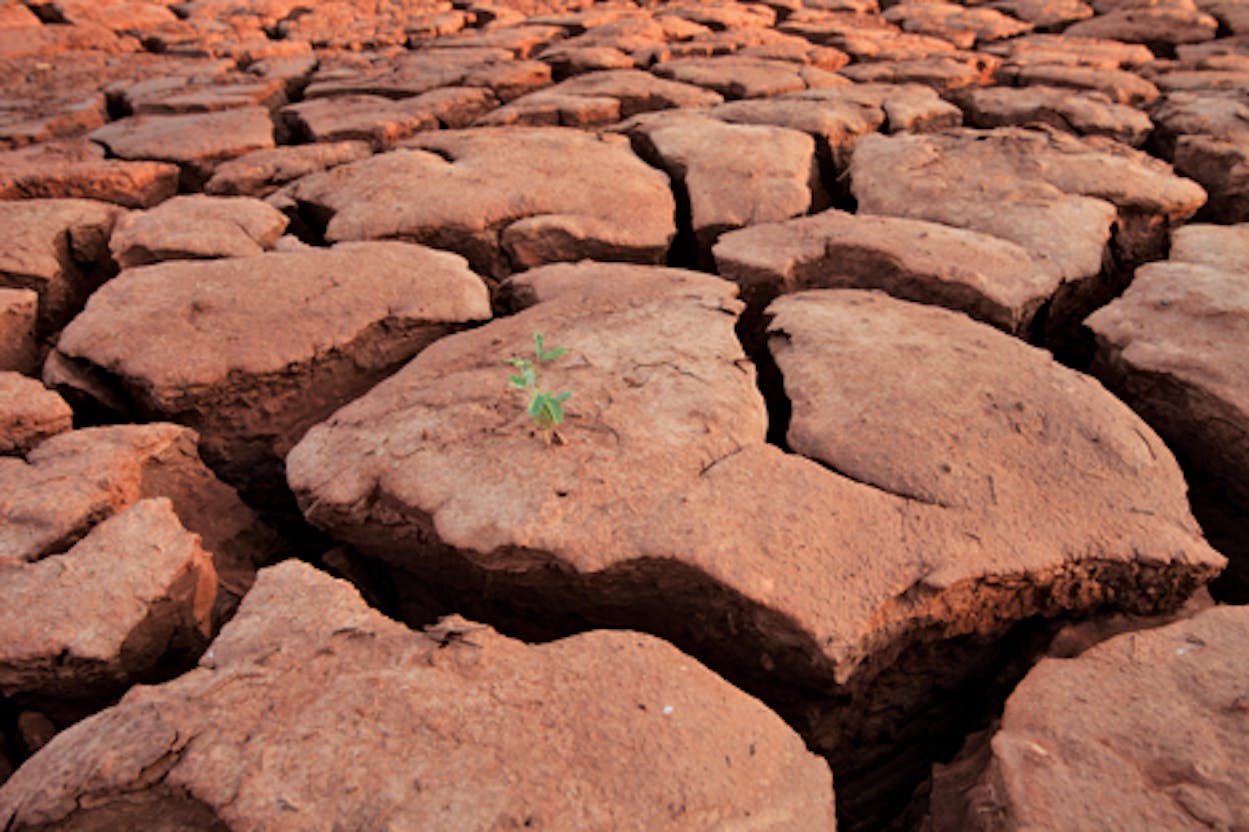The first serious coverage of water in TEXAS MONTHLY came just a couple months shy of our two-year anniversary, in a story by Greg Curtis entitled “Disaster, Part I. Lubbock is running out of water.” (A companion piece, “Disaster, Part II,” argued that Houston was sinking into the ocean.) The central idea of this alarming essay was that the Ogallala Aquifer was rapidly being depleted and there was no plan for what would happen next. Or rather, there was a plan, but it was flawed in certain ways that could be expressed only through metaphor: “The Texas Water Plan, that elaborate scheme to import water from the mouth of the Mississippi to the arid West Texas plains, is like an aging stripper.” The remainder of the first paragraph elaborated on the comparison. “Both have by now laid claim to popular attention far longer than their ability to command it,” Greg explained, “and neither is any longer likely to deliver what they promise.”
In our current issue, which contains a special report on water in Texas, the state’s method for contending with drought comes in for some more abuse, this time in a memorable formulation by senior editor Nate Blakeslee (“Drawing Straws”): “The state water plan is to planning as chicken-fried steak is to steak.” I will leave it to the individual reader to decide whether the much-maligned water plan has, in the newer comparison, been treated more kindly or less.
Nearly forty years separate these two stories, and during that time drought has been a regular subject for TEXAS MONTHLY. How could it not be? For better or worse, we make our home in a place that will probably always struggle with water shortages. “Drought is like a hungry, roaming wolf, returning periodically to old haunts to kill again.” So wrote the late and sorely missed Elmer Kelton in an essay for the July 1996 issue. A drought was under way at the time, and Kelton, who covered the subject for us numerous times during his long and illustrious career, cautioned readers that “dryness is the norm; those eagerly anticipated periods of adequate rainfall are the exception.” A story by Suzanne Winckler in October 1984, during that year’s bad drought, reached a similar conclusion: “Our inevitable droughts have marked our lives and will continue to do so just as profoundly as did the Battle of the Alamo or the ballots in Box 13.”
This month’s collection of stories on drought and water is motivated by the same sentiment, but this time we’ve thrown more energy and resources at the subject than ever before. Coming off the worst single-year drought in Texas history, with apocalyptic signs all around (towns running out of water, lake levels precipitously low, wildfires ravaging the countryside, cattle dying or sold off by the hundreds of thousands), we decided to go big. Not only has every feature story in this issue been turned over to an exploration of how Texas has dealt with drought over the years, but we’ve partnered with our friends at KUT and StateImpact Texas to create an hour-long radio companion to the issue. KUT is an old friend, with whom we’ve teamed up on many past occasions. Last November the station launched StateImpact, a local reporting project aimed at increasing coverage of the critical energy and environmental issues facing the state. The show we created together, which is based on the stories in this issue, will air on numerous public radio stations across Texas beginning on June 22.
And that’s not all: we’ve also organized a symposium, to be held on July 12 at the LBJ Presidential Library, in Austin, dedicated to the theme of solutions. We’ll have some of the state’s best brains in attendance to offer their ideas for how we can ensure a steady supply of water for generations to come (for more information, click here; if you can’t make it, follow us on Twitter using the hashtag #txwater). And maybe, when all the serious discussion is over, one of them can help me figure out whether the water plan is more like an aging stripper or a chicken-fried steak.







